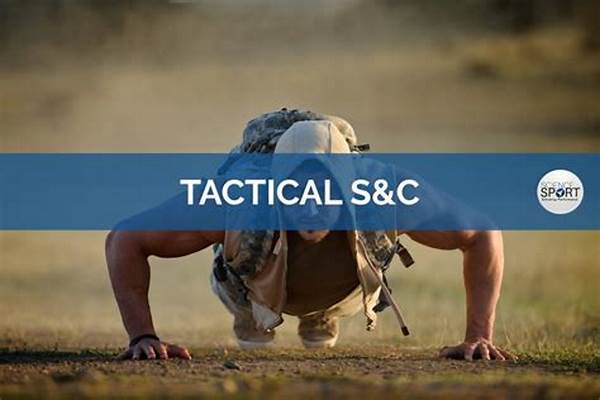Hey there! Let’s chat about something that doesn’t always get the spotlight it deserves – tactical fitness for emergency workers. Now, if you’re a firefighter, paramedic, or law enforcement officer, you’re probably well aware of how demanding your job can be, both physically and mentally. But did you know there’s a whole fitness regimen tailored just for you? Yup, it’s called tactical fitness, and it’s a game changer!
Read Now : Fire Safety Workshops In Baldwinsville
What is Tactical Fitness for Emergency Workers?
Tactical fitness for emergency workers isn’t just about lifting weights or running miles. It’s about preparing your body to handle intense, high-pressure scenarios that your job might throw at you. Imagine having to carry heavy equipment, climb stairs rapidly, or rescue someone in distress. Tactical fitness focuses on functional strength, endurance, agility, and mobility – all wrapped up with an element of mental resilience. The goal is simple: keep you safe and effective while you’re keeping others safe.
So why is this different from your average gym workout? Well, tactical fitness for emergency workers is specially designed to mimic real-life scenarios you’d encounter in the field. It’s not just about looking fit; it’s about being fit for the incredibly vital job you do. It’s tailored to ensure you can sustain peak performance during long shifts and recover quickly in critical situations. Plus, it’s a fantastic way to reduce injury risk, which is crucial given the physical demands of emergency work.
Key Elements of Tactical Fitness for Emergency Workers
1. Functional Strength: It’s not about how much you can bench press, but how well you can lift, carry, and maneuver in real-life scenarios.
2. Endurance: Long hours without downtime require high stamina. Tactical fitness helps build lasting energy through cardio workouts and interval training.
3. Agility and Mobility: Navigating obstacles quickly and efficiently is crucial. Training includes drills to improve speed, flexibility, and coordination.
4. Mental Resilience: Preparation isn’t just physical. Techniques to manage stress and remain calm under pressure are essential components.
5. Injury Prevention: Exercises designed to strengthen critical muscles and improve posture, helping prevent common job-related injuries.
The Importance of Tactical Readiness
Being prepared isn’t just a cliché; it’s the backbone of tactical fitness for emergency workers. Whether it’s a sudden fire outbreak or an unexpected call during the graveyard shift, readiness ensures you perform optimally without second-guessing your physical capabilities. This training instills confidence in your body’s ability to react, adapt, and overcome.
Moreover, a well-prepared body is less likely to succumb to fatigue or injury. Tactical fitness for emergency workers includes strategies for quick muscle recovery, ensuring you’re always ready for whatever challenge comes next. It’s about being proactive, not reactive. When your fitness routine includes these tailored workouts, you’re already a step ahead, able to provide the essential, life-saving services that make such a huge difference in emergencies.
Read Now : Key Places For Co Detector Positioning
Innovative Workouts in Tactical Fitness
Tactical fitness for emergency workers isn’t just a routine; it’s an evolving set of exercises designed to meet the changing demands of your job. Expect cycles that include high-intensity interval training (HIIT), circuit workouts, and even tech-based assessments to track your progress and tweak your regimen as needed.
Training also employs practical drills like stair climbs with weighted vests or obstacle courses that simulate real-life hurdles you’d face on the job. The focus is on replicating those high-intensity scenarios in a controlled setting, ensuring your body knows exactly how to act when it’s go-time. The blend of fitness and functionality makes it not only challenging but super rewarding.
Challenges in Implementing Tactical Fitness
Alright, let’s talk about the hurdles you might face incorporating tactical fitness for emergency workers into your busy routine. Time is a huge factor. With shift rotations and ever-demanding job pressures, finding time for fitness can seem nearly impossible. Another issue is access to resources or trainers who specialize in this niche.
But don’t let these challenges deter you. Many programs are now offering adaptable routines that require minimal equipment and can be done anywhere – be it at the station or at home. Plus, with online resources, you can find virtual coaching tailored specifically to tactical fitness for emergency workers.
Making Tactical Fitness a Priority
It might be tough juggling work, life, and fitness, but making tactical fitness for emergency workers a priority is like investing in an insurance policy for your body. It pays dividends in enhanced performance, fewer injuries, and, most importantly, a longer, healthier career.
Remember, it’s not about having the perfect six-pack; it’s about ensuring you have the endurance, strength, and resilience required to do your job effectively. So go ahead, make tactical fitness a non-negotiable part of your routine. Your future self (and the countless lives you save) will thank you!
Conclusion: Embracing Tactical Fitness
In a nutshell, tactical fitness for emergency workers is more than a trend – it’s a necessity. By embracing this approach, you’re not only safeguarding your health but also enhancing your ability to serve and save lives. It’s all about adopting a fitness routine that’s every bit as dynamic as the challenges you face on the job. Stay strong, stay ready, and keep making a difference!
